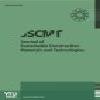Performance of dredged sediments based controlled low-strength material
Performance of dredged sediments based controlled low-strength material
___
- [1] Sheehan, C., & Harrington, J. (2012). Management of dredge material in the Republic of Ireland - A review. Waste Management, 32(5), 1031–1044. [CrossRef]
- [2] USEPA & USACE (2007). Identifying, planning, fi - nancing beneficial use projects using dredged materi- al: beneficial use planning manual. Epa842-B-07-001, (U.S. Environmental Protection Agency & U.S. Army Corps of Engineers), p. 81.
- [3] Dia, M. (2014). Effect of chemical and thermal treat- ment on the geotechnical properties of dredged sed- iment. Procedia Engineering, 83(5), 159–169.
- [4] Costa-Pierce, B. A. and Weinstein, M. P. (2002). Use of dredge materials for coastal restoration. Ecologi- cal Engineering, 19(3), 181–186.
- [5] Limeira, J. (2011). Mechanical and durability prop- erties of concrete made with dredged marine sand. Construction and Building Materials, 25(11), 4165– 4174. [CrossRef]
- [6] United States Environmental Protection Agency (USEPA). (1991). Handbook - Remediation of Con- taminated Sediments. United States Environmental Protection Agency.
- [7] United States Army Corps of Engineers (USACE) (2015). Dredging and dredged material management’, U.S. Environmental Protection Agency, p. 920. http:// www.publications.usace.army.mil/Portals/76/Publi- cations/EngineerManuals/EM_1110-2-5025.pdf
- [8] Lim, Y. C., Lin, S-K., Ju, Y-R., Chen, C-W., Dong, C-D. (2019). Reutilization of dredged harbor sedi- ment and steel slag by sintering as lightweight aggre- gate. Process Safety and Environmental Protection, 107, 2411–2502. [CrossRef]
- [9] Mostafa, Y. E. S. (2012). Environmental impacts of dredging and land reclamation at Abu Qir Bay, Egypt. Ain Shams Engineering Journal Faculty of En- gineering, Ain Shams University, 3(1), 1–15. [CrossRef]
- [10] McNeil, D. (2019). Private Sector Perspective, Benefi- cial Use of Dredged Material Workshop. September 4, 2019, Peoria, IL. [CrossRef]
- [11] Great Lakes Commission (2001), Waste to resource: beneficial use of great lakes dredged material, habi- tat and coastal, library, soil erosion and dredging, Aug. 2001, Ann Arbor, MI, https://www.glc.org/ library/2001-waste-to-resource-beneficial-use-of- great-lakes-dredged-material
- [12] Medeiros, M. H. F. (2013). Reinforced concrete in marine environment: Effect of wetting and drying cycles, height and positioning in relation to the sea shore. Construction and Building Materials, 44, 452– 457. [CrossRef]
- [13] Park, J. (2016). The suitability evaluation of dredged soil from reservoirs as embankment ma- terial. Journal of Environmental Management, 183, 443–452. [CrossRef]
- [14] Lee, C. R., Brandon, D. L., & Price, R. A. (November 30, 2020). Manufactured soil field demonstration for constructing wetlands to treat acid mine drainage on abandoned Minelands, U.S. Army Corps of Engineers. https://apps.dtic.mil/sti/pdfs/ADA474492.pdf
- [15] NRMCA (2006), Guide Specification for Controlled Low Strength Materials (CLSM), Specification Guide, National Ready Mixed Concrete Association, 2006. Retrieved from http://www.flowablefill.org/down- loads/CLSMSpecifications1.pdf
- [16] Naik, T.R., Kraus, R.N., Carty, R.H. (2002). Use of ponded fly ash and crushed sand for flowable slurry (Report No. CBU-2002-10). Center for By-Product Utilization, University of Wisconsin, Milwaukee, Wisconsin.
- [17] Tarabadkar K. (2009). Accelerated carbonation of contaminated sediments and its application. (Publi- cation No. 1481717) [Master Thesis, Bachelor of En- gineering, Pune University]. ProQuest Dissertations Publishing.
- [18] Kim, & Pradhan, B. (2016). Mechanical and ger- mination characteristics of stabilized organic soils. Marine Georesources & Geotechnology, 34(7), 681– 688. [CrossRef]
- [19] Kaliannan, Chan, C.-M., & Suratkon, A. (2017). 1D Compressibility of DMS Treated with Cement-GGBS Blend. The 9 th International Unimas Stem Engineer- ing Conference (ENCON 2016) “Innovative Solu- tions for Engineering and Technology Challenges. MATEC Web of Conferences, 87, 1004. [CrossRef]
- [20] Rabbanifar S. (2018). Stabilization of organic silty clayey dredged material for beneficial use, a macro- micro study on physio-chemical properties. Lamar University.
- [21] Do, T. M., Do, A. N., Kang, G. O., & Kim, Y. S. (2019). Utilization of marine dredged soil in controlled low- strength material used as a thermal grout in geo- thermal systems. Construction and Building Materi- als, 215, 613–622.
- [22] Abidi, I., Benamara, L., Correia, A. A. S., Pinto, M. I. M., & Cunha, P. P. (2021). Characterization of dredged sediments of Bouhanifia dam: potential use as a raw material. Arabian Journal of Geosciences, 14(23), 2631. [CrossRef]
- [23] Shi, J., Wang, S. , Cao, W., Su, J., & Zhang, X. ( 2022). Mechanical properties and strengthening mechanism of dredged silty clay stabil ized by cement a nd steel slag. Materials, 15(11), 3823. [CrossRef]
- [24] IDOT. (2016). Standard specification for road and bridge construction, illinois department of trans- portation. Springfield, Illinois.
- [25] ACI 229R. (2013). Report on controlled low-strength materials. American Concrete Institute, Farmington Hills, MI.
- Yayın Aralığı: 4
- Yayıncı: YILDIZ TEKNİK ÜNİVERSİTESİ REKTÖRLÜĞÜ
Effect of Thermal Variances on Flexible Pavements
Michael Toryila TIZA, Kavnen JIRGBA, Habibu Abubakar SANI, Terlumun SESUGH
A review on engineering biocomposites and natural fiber-reinforced materials
Halit Süleyman TÜRKMEN, Ataberk BAYSAL, Paşa YAYLA
Akintayo OPAWOLE, Betty Oluwafunso OLOJEDE, Kahilu KAJİMO-SHAKANTU
Effect of Fiber Type, Shape and Volume Fraction on Mechanical and Flexural Properties of Concrete
Cenk FENERLİ, Mahmut BAŞSÜRÜCÜ, Şadiye Defne AKBAŞ, Ceren KINA
Natural pozzolan-based green geopolymer foam for thermal insulation
Kübra EKİZ BARIŞ, Leyla TANAÇAN
An Evaluation of Vertical Dynamic Stress Attenuation for Compacted Coarse-Grained Soils
Kuangbiao SUN, Mingjing FANG, Donglin SHU, Yang PU, Wenbing WANG
Performance of dredged sediments based controlled low-strength material
Qamar SHAHZAD, Muhammad UMAIR, Saad WAQAR
Fatih DOĞAN, Heydar DEHGHANPOUR, Serkan SUBAŞI, Muhammed MARAŞLI
